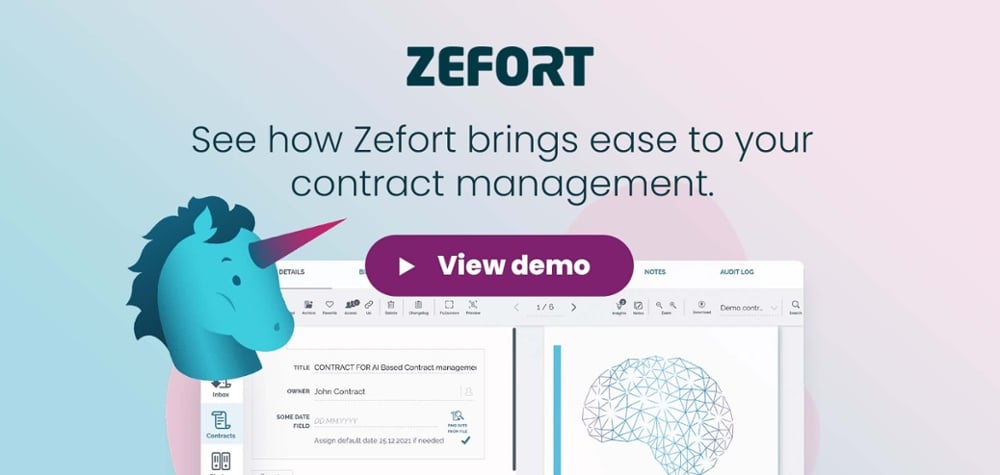Embracing a Legal Design Approach: Enhancing User Experience in the Legal Field
Ready or not, the legal world is undergoing a much-needed makeover. For far too long, legal processes have been cumbersome, confusing, and frustrating for the average person. But what if we told you that there’s a new approach on the block that aims to change all of that? Enter legal design, an innovative and human-centric way of thinking that prioritizes user experience in the legal field.
In this article, we’ll delve into the concept of legal design and explore how it can transform our often-daunting encounters with the law into a smoother, more intuitive experience. So, fasten your seatbelts and get ready to embark on a journey through the exciting world of legal design.
Overview of User Experience in the Legal Field
User experience (UX) is gaining importance in the legal field, as lawyers recognize the need for client-centered services. By adopting a legal design approach, legal professionals can create user-friendly products and services that meet the needs and expectations of their clients. This involves carefully considering the entire user journey, from the initial inquiry to the final outcome, and optimizing each stage to enhance user satisfaction.
Legal design principles, such as simplifying legal language and improving accessibility, can make legal processes more understandable and less overwhelming for clients. In doing so, legal professionals can foster better communication, build trust, and ultimately deliver a more positive user experience.
Importance of a User-Centered Approach
In a legal design approach, the importance of a user-centered approach cannot be overstated. By putting the needs and experiences of users at the forefront, legal professionals can create more effective and accessible solutions. Taking a user-centered approach ensures that legal processes and documents are designed with the user’s perspective in mind, which can lead to improved comprehension and engagement.
Understanding Legal Design Approach
Defining Legal Design Approach
The legal design approach focuses on enhancing the user experience within legal systems. This approach aims to simplify complex legal processes and documents, making them more accessible and understandable for the people involved. By combining graphic design, data visualization, and user-centered design principles, legal professionals can create intuitive and visually appealing legal materials.
Legal design also promotes collaboration and empathy, involving clients and stakeholders in the design process to ensure their specific needs are addressed. Through the application of this approach, legal professionals can effectively communicate information, improve access to justice, and promote legal literacy among users.
Key Principles of Legal Design
- User-Centric Focus: Successful legal design begins with putting the needs and experiences of users front and center. This means understanding their challenges, goals, and preferences to create solutions that truly address their needs.
- Simplification and Clarity: Legal information can often be dense and complex, leading to confusion and frustration. Legal design aims to simplify this information by using plain language, visual aids, and intuitive design to make it more accessible and understandable for everyday users.
- Visual Communication: Visual elements such as icons, infographics, and diagrams can help to convey complex legal concepts and processes in a more digestible manner. By incorporating visual communication, legal design enhances comprehension and engagement while reducing cognitive overload.
- Iterative Prototyping: Legal design embraces an iterative approach, involving continuous testing and refinements. By prototyping solutions and gathering feedback from users, legal designers can adapt and improve their designs to match users’ evolving needs and preferences.
- Empathy and Inclusivity: Legal design recognizes the diverse range of users and seeks to ensure that its solutions are inclusive and accessible to all.
By considering the needs of different user groups and incorporating their perspectives, legal design strives to create equitable and user-friendly legal experiences.
Benefits of Applying a Legal Design Approach
Improved Access to Legal Information and Services
Improved access to legal information and services is a key objective in the legal design approach. By adopting this approach, legal professionals aim to make legal processes and resources more easily understandable and accessible to the general public. Through the use of plain language, visual aids, and user-friendly interfaces, individuals can navigate the complex world of law with greater ease.
This not only empowers people to better understand their legal rights and responsibilities, but also allows them to access affordable legal services more efficiently, ultimately promoting a fair and accessible justice system for all.
Enhanced Understanding and Engagement
By adopting a legal design approach, complex legal concepts can be communicated in a more accessible and user-friendly manner. Visual elements, such as infographics and diagrams, can be incorporated within legal documents, aiding comprehension and reducing ambiguity.
In legal design, plain language is emphasized, enabling individuals without legal expertise to understand their rights and obligations. Interactive tools and digital platforms can be utilized to engage users, encouraging active participation and empowering them to make informed decisions.
User-centric design principles guide the creation of legal materials and services, ensuring that they align with the needs and preferences of the target audience.
Finally, improved understanding and engagement ultimately result in increased compliance, better access to justice, and higher levels of satisfaction among users.
Streamlined Processes and Efficiency
The legal design approach emphasizes streamlining processes and increasing efficiency within the legal industry. By incorporating design thinking principles, legal professionals can identify and eliminate bottlenecks in their workflows.
This approach involves mapping out the entire legal process, from initial client interactions to final resolution, and identifying areas for improvement.
By simplifying complex legal concepts and documents, the legal design approach helps increase accessibility and comprehension for all stakeholders involved.
Real-Life Examples of Legal Design Approach
Redesigning Legal Forms for Simplicity and Clarity
Redesigning legal forms is crucial to enhance simplicity and clarity, ensuring that ordinary people can understand them without confusion or the need for legal expertise. By employing a legal design approach, these forms can be transformed into user-friendly documents. This involves rethinking the layout, language, and structure to make them more accessible, using plain language and a clear hierarchy of information.
Visual elements such as headings, bullet points, and whitespace can also be incorporated to aid comprehension. Redesigned legal forms empower individuals, enabling them to navigate complex legal processes independently and make informed decisions.
Designing Interactive Legal Platforms
Designing interactive legal platforms involves applying a legal design approach, focusing on user-centered design principles. The goal is to create intuitive and user-friendly platforms that enhance communication and access to legal information. This approach simplifies complex legal processes by employing clear language, visual aids, and interactive features. By incorporating feedback loops and user testing, these platforms can continuously improve and adapt to user needs.
Interactive legal platforms have the potential to transform the way legal services are delivered, making them more accessible, inclusive, and efficient for both legal professionals and individuals seeking legal assistance.
Visualizing Complex Legal Concepts
Visualizing complex legal concepts can be a game-changer in the legal field. By utilizing visual tools such as diagrams, flowcharts, and infographics, lawyers can effectively communicate intricate legal concepts to clients and stakeholders. These visuals break down complex information into easily digestible formats, making it easier for individuals to understand and navigate the legal landscape.
With the help of visual aids, legal professionals can present information in a more engaging and accessible way and enhance clarity, comprehension, and decision-making. Adopting a visual approach in legal design promotes transparency, simplifies complex ideas, and ultimately empowers individuals to make informed choices.
Challenges and Considerations in Implementing Legal Design
Resistance to Change within the Legal Field
The legal field has traditionally been resistant to change due to its conservative nature and a mindset of maintaining established norms. Lawyers and legal professionals are typically risk-averse and may perceive change as a threat to their expertise and status quo.
The hierarchical structure and conservative culture of law firms can contribute to resistance as individuals may resist changes that challenge traditional power structures. Also, the complexity of legal systems, coupled with a fear of the unknown, can create resistance to change within the legal field.
Overcoming resistance to change within the legal field requires effective communication, education, and demonstrating the positive impact of change on both legal professionals and their clients.
Steps to Embrace a Legal Design Approach
Developing a User-Oriented Mindset
- Empathize: Understand the needs and experiences of users. Put yourself in their shoes to truly grasp their perspective.
- Collaborate: Engage with users, stakeholders, and colleagues throughout the design process. Create an inclusive environment that encourages open dialogue and embraces diverse ideas.
- Simplify: Streamline complex legal information and processes to make them accessible and understandable to users. Break down jargon and legalese into clear language that eliminates confusion.
- Iterate: Continuously seek feedback and refine designs based on user input. Embrace a mindset of constant improvement through user testing and evaluation.
- Prioritize usability: Design with the end-user in mind by prioritizing ease of use, efficiency, and practicality. Strive to eliminate any unnecessary barriers or frustrations that may impede user engagement.
- Bridge the gap: Communicate legal concepts and information in a way that bridges the gap between legal professionals and laypersons. Create visual aids, interactive tools, and plain-language explanations to enhance comprehension.
Embrace innovation: Stay updated with emerging technologies and design trends to find innovative ways to meet user needs.
Collaboration between Legal and Design Professionals
Collaboration between legal and design professionals is crucial in the legal design approach. By combining their unique skill sets, these two disciplines can create innovative and user-friendly solutions for legal problems. Design professionals bring their expertise in user experience, visual communication, and problem-solving, while legal professionals contribute their deep understanding of laws, regulations, and legal processes.
This collaboration results in the development of legal solutionsthat are not only legally sound but also visually appealing and accessible to the users. The legal and design professionals work together to simplify complex legal information, improve user engagement, and enhance the overall experience of legal services.
Iterative Testing and Feedback
Iterative Testing and Feedback is a crucial component of the legal design approach. It involves continuously testing the solutions developed throughout the design process to gather feedback and make necessary adjustments. Here’s why it matters:
- Enhanced user experience: By involving end users in testing, legal designers gain valuable insights into how their solutions are being received. This enables them to refine and tailor their designs to meet the needs and expectations of users, resulting in an improved user experience.
- Identification of flaws and loopholes: Iterative testing helps identify any flaws or loopholes in the design before it is fully implemented. By obtaining user feedback, legal designers can identify issues that may have been overlooked and make the necessary modifications to ensure a more robust solution.
- Cost-effective approach: By testing and receiving feedback at different stages of the process, legal designers can avoid costly mistakes or rework. Catching and addressing potential problems early on can save time, resources, and ultimately, money.
- Continuous improvement: Ongoing testing and feedback allow legal designers to continuously learn and refine their solutions.
By embracing an iterative approach, they can adapt and improve designs based on real-world experiences, ensuring continuous improvement and innovation.
Transforming the Legal Field through Improved User Experience
The legal field is known for being complex and difficult for non-experts to navigate. However, a new approach called legal design aims to change that by improving the user experience. By applying principles of design thinking to legal processes and documents, legal professionals can create more user-friendly interfaces and materials. This approach involves simplifying language, providing clear instructions, and presenting information in a visually appealing way. By transforming the legal field through improved user experience, legal design has the potential to make the law more accessible and understandable for everyone.
Conclusion
The legal field is undergoing a transformation, as lawyers and firms are recognizing the importance of embracing a legal design approach to enhance user experience. By adopting principles from design thinking, legal professionals are addressing the complex and often intimidating nature of the legal system. They are breaking down legal processes into simpler, more accessible formats, making legal information and services easier for everyday people to navigate.
This approach focuses on empathizing with users, understanding their needs, and designing legal solutions accordingly. By incorporating user-centered design, the legal field aims to improve the overall experience for clients, making the legal system more approachable, efficient, and just.





